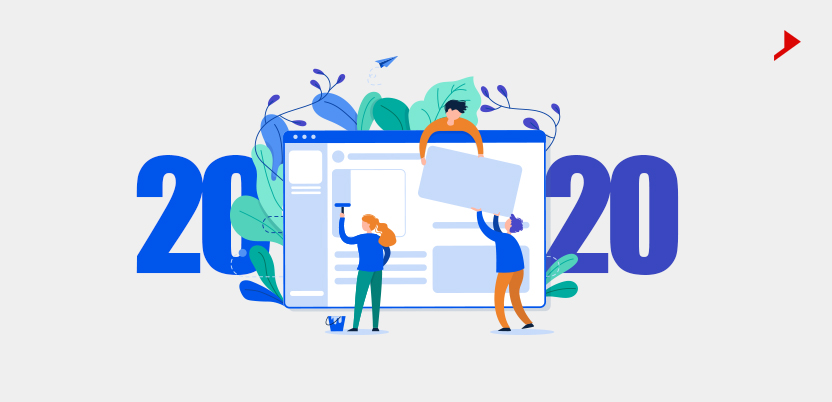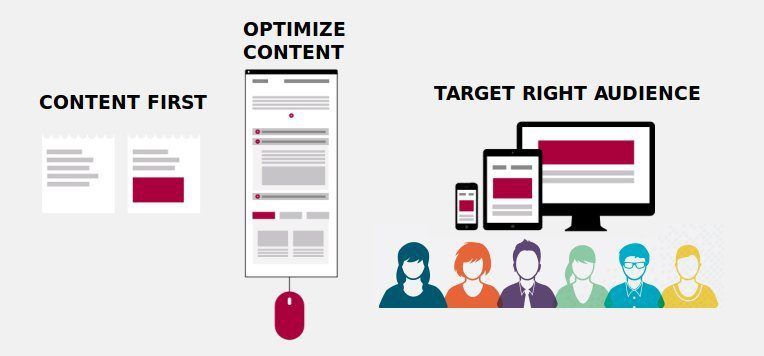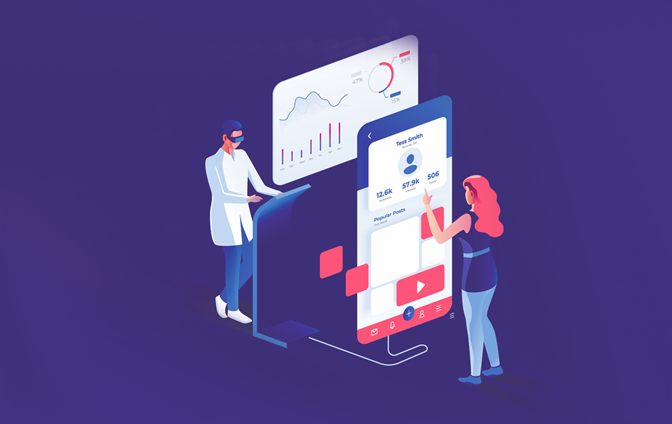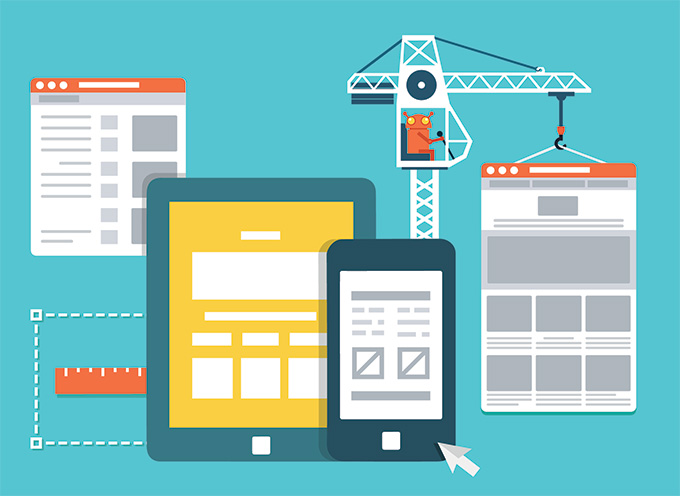Consumers’ expectations are ever-changing and shaped by a variety of factors, whether they are social, technological, or visual. As a result, industries have to follow these trends to be relevant and bring joy to their loyal consumers while obtaining new ones. The same applies to website designers as they need to create visually and aesthetically appealing interfaces for their clients that will be functional as well. So, let’s explore some of the most important UI and UX trends of 2020 that you cannot miss!
Dark mode
The dark mode is probably one of the hottest trends in UI and it basically allows users to switch the color scheme of a website or application to a darker one. The popularity of this mode is quite understandable. First of all, it reduces eye strain as many users can browse their favorite apps and websites in the evening, after work. The dark mode is also stylish because of its modernity and the ability to highlight design details that might be too bleak in classic color scheme mode. Popular apps such as Instagram offer dark mode and the same applies to smartphone industry giants: Android and Apple provide an ability to customize themes.
Subtle motion
This trend appeared because 2019 has been marked by quite an overuse of animation. The previous trend faded because too much animation is often distracting for a viewer and it can really overburden an interface. As a result, users could often miss something important in favor of several animations that just stand out. That’s why subtle motion is now becoming a thing. This sort of approach is more stylish because of the fact that it encourages users to engage with an interface to find out what each moving element has to offer. Free Essay Writers and Seek are both great examples of this design in use. Seek’s icons will stand up while CraftResumes’ icons such as “Prices” and “Blog” will become underlined when a user points one’s mouse cursor over these elements. Small details matter!
Breathtaking 3D elements
This trend among UI and UX designers is a no-brainer. Last years have witnessed the appearance of VR and AR technologies that are available to an average user. What’s more, continuous technological advancement seems to make them even more available in the nearest future. Immersive 3D design elements also encourage viewers to dedicate more time to a webpage thus effectively increase the average time spent on it. However, the effective use of breathtaking 3D elements is inevitably tied to the optimization of a webpage, so this should be considered as well.
Element layering
UI and UX designers have moved to an approach that can be characterized as the layering of different elements on top of each other. Why do they do this? The answer is simple – such an approach creates soft shadows while highlighting the depth of visual elements, making them kinda 3D-ish. This is an excellent solution for companies that want their websites to move from traditional 2D flat elements to a more stylish design that is more appealing and up-to-date with all the other trends.
Neomorphism
Now, this trend took the first months of 2020 by storm and UI/UX designers are keeping the hype. First of all, let’s talk about skeuomorphism – an approach to interface design that is about making elements look like their real counterparts. Think of a standard calculator application or calendar. Neomorphism is basically the use of various shadows to create an interface design that looks both technological and realistic. It’s a combination of skeuomorphism and flat elements that results in quite a futuristic design that is something between 3D and 2D. Users love it and that’s what really matters.
Large images
2020 is marked by several shifts in UI/UX design and this trend happens to follow the classic rule “the larger the better”. There is a visible tendency to implement the use of large images, photos, or videos as backgrounds for websites. Most of the time, they take up all the background space; although it’s imperative to be smart when choosing an appropriate image for each particular design. Using a photo of a forest for an interior design company is a no-go.
Quality photography with textures
The era of smoothed out polished surfaces and gradients seems to be a thing of the past. Now, 2020 is the year of realistic textures and quality photos in general. Photos’ sharpness and richness in detail is now a trend and it is successfully utilized by numerous website designers. Still, the important thing is not to go too far with it, just like with anything. A well-placed quality photo background coupled with interactive elements will yield a stunning result. Homecult is a great example of well-placed photographs as each project featured on a company’s website is supported by its own background to represent it. You can notice that photos are highly detailed and as sharp as it gets! Also, the main highlights of these photos are in their immersiveness as the use of lighting and furniture textures creates a feeling of depth.
A blend of photos and graphics
A natural neighbor of the previous entry, this 2020 trend is also worth attention. A combination of both photos and graphics has been used by photographers and artists for quite some time but it seems that this trick has become quite popular in UI/UX design. A clever combination of these elements creates an opportunity to showcase creativity while yielding a memorable design. It’s all about combining background with other, more interactable elements of the interface. So, putting a thinking cap on one’s head can lead to some bright and enjoyable design solutions.
Data visualization
This one’s similar to breathtaking 3D elements but different! A typical use of elements such as lists and tables is something so out-of-date and it just plain bores users. This may sound like bad news for websites that are filled with content oriented on people who are interested in technology and stuff but there is a solution. Abstract visualization of data is one of the 2020 trends that are taking their place as staplemark of design. Instead of giving a plain product image with specifications, it is possible to create a 3D interactive model that will respond to the mouse movements.
Final thoughts
2020 is an interesting year for UI and UX designers. All the trends are clearly pointing at the use of older design tendencies such as photography and modern things 3D interfaces. A smart designer should carefully consider all the entries in this list to come up with a truly unique and appealing design. Experimenting with different elements seems to be the best approach, just like the majority of the entries listed here are some blend of several things!
- 2020: UI and UX Trends You Can’t Miss - October 28, 2020
![]() Give feedback about this article
Give feedback about this article
Were sorry to hear about that, give us a chance to improve.








